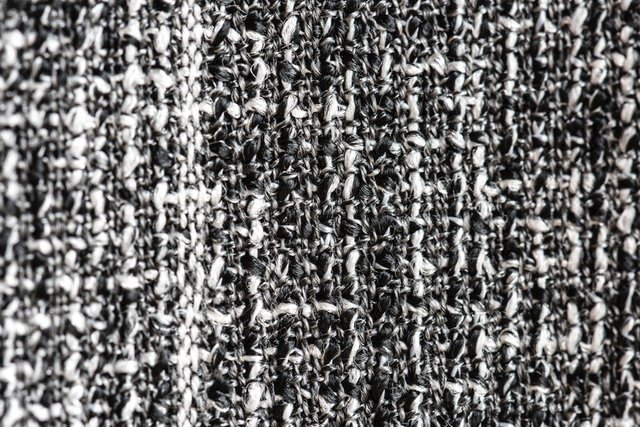Materials’ electric and magnetic properties characterized by strongest-yet microscopes
By driving advances in electron microscopy, Hitachi High-Technologies is helping to develop transformative materials and technologies.
Advanced materials with finely tuned electric and magnetic properties are the goal of all materials scientists. More energy efficient electronic devices, better performing hybrid electric vehicles, and smarter data storage devices, are among potential applications for the right material.
“The electric and magnetic fields at a material’s atomic level determine its bulk properties and behavior, and are an essential area of research,” says Toshiaki Tanigaki, a senior researcher at Hitachi, Ltd. Research & Development Group in Japan.
Electron microscopes with atomic-level resolution are allowing scientists to peer deeper into the atomic arrangements of highly-functioning, composite materials, helping them to understand how to tweak their electric and magnetic properties.
For example, the interface between the lanthanum ferrite (LaFeO3) and strontium titanate (SrTiO3) has generated considerable interest because it exhibits properties not found in its constituent materials. Individually, LaFeO3 and SrTiO3are nonpolar insulators, but curiously, LaFeO3/SrTiO3 interfaces exhibit spontaneous polarization and bulk photovoltaic effect.
Tanigaki, in collaboration with researchers from RIKEN, Tohoku University and the University of Tokyo in Japan, has used images captured by Hitachi’s HF5000 Field Emission Transmission Electron Microscopes (FE-TEM) to map the atomic arrangements at the interface of ultrathin layers of LaFeO3 and SrTiO3 crystals.
The images, with picometre-level resolution, have revealed the termination elements of SrTiO3 at the interface, which play an essential role in the emergence of spontaneous electrical polarization, and the photovoltaic effects of the composite material.
“Elements at the interface reverse the electrical properties of the bulk material,” explains Tanigaki. “Being able to map these elements at atomic resolutions was a critical aspect of the research.”
Tanigaki says the discovery may one day lead to the development of more efficient photovoltaic materials.
Meanwhile Hitachi’s holography electron microscopy has probed even deeper, advancing materials science. Involving some of the most powerful microscopes in the world, the technique is capable of achieving electronic observation at resolutions down to 43 picometres.
Researchers from Tohoku University, RIKEN, Japan Science and Technology Agency, the National Institute for Materials Science in Japan and Dong-A University in South Korea have used Hitachi’s HF-3300 holography electron microscope to investigate the magnetic fields of neodymium-iron-boron (Nd-Fe-B) permanent magnets, at their interface, called the grain boundary.
The strongest permanent magnets currently available, Nd-Fe-B magnets are used in a variety of applications, including magnetic resonance imaging, sensors, and in high-performance motors for hybrid electric vehicles. However, their coercivity – a measure of the strength of permanent magnets – is significantly reduced at the elevated temperatures experienced in vehicle engines.
“A big challenge in studying Nd-Fe-B permanent magnets is understanding and controlling the grain boundary magnetism, which is essential for improving the coercivity of the magnet,” says Yasukazu Murakami, a Professor at Kyushu University in Japan, and visiting researcher at RIKEN, who was leading the research.
Electron holography allowed the researchers to study the magnetism of the ultrathin (a few nanometers in size) grain boundary region in Nd-Fe-B permanent magnets with pinpoint accuracy, and could lead to stronger permanent magnets for use in better-performing traction motors in hybrid electric vehicles.
By allowing scientists to observe the magnitude and direction of the magnetic fields of materials at unprecedented resolutions, electron holography is deepening understanding of the magnetic properties and behaviour of materials, leading to new directions in materials science and engineering.
Although scientists have been able to separate the electric and magnetic fields to observe them at resolutions less than one nanometer, they have not been able to achieve this at the atomic level.
“Recent advances in electron microscopes are reaching a technological limit,” explains Tanigaki. “For the next breakthrough, we are looking to combine electron holography with information science by using artificial intelligence to improve the signal-to-noise ratio, and could allow us to achieve magnetic field observations with atomic-level resolution.”
This article was first published by Springer Nature. Read the original article at https://www.nature.com/articles/d42473-019-00003-z.
To read more of my writings check out my website at https://gluons2galaxies.com.

Source
Copying/Pasting full or partial texts without adding anything original is frowned upon by the community. Repeated copy/paste posts could be considered spam. Spam is discouraged by the community, and may result in action from the cheetah bot.
More information and tips on sharing content.
If you believe this comment is in error, please contact us in #disputes on Discord
Hi! I am a robot. I just upvoted you! I found similar content that readers might be interested in:
https://www.nature.com/articles/d42473-019-00003-z